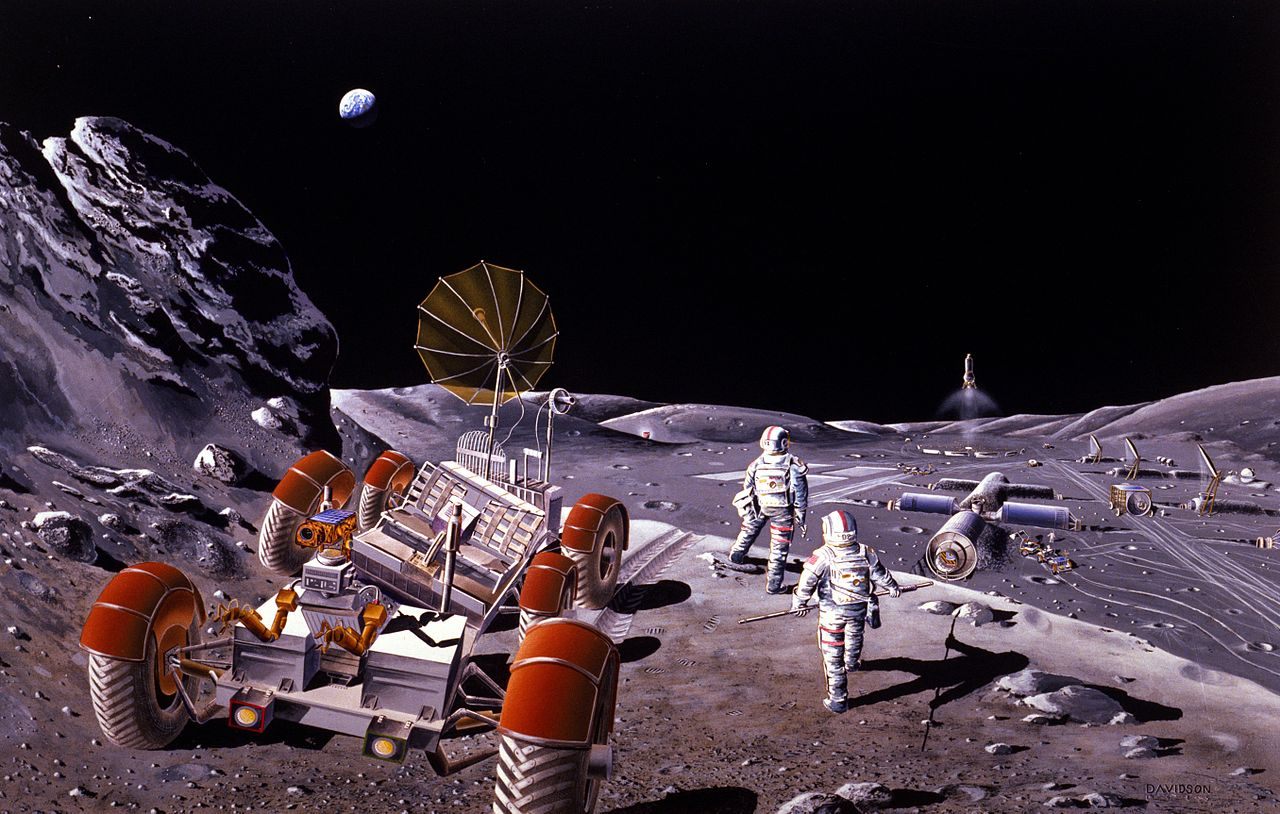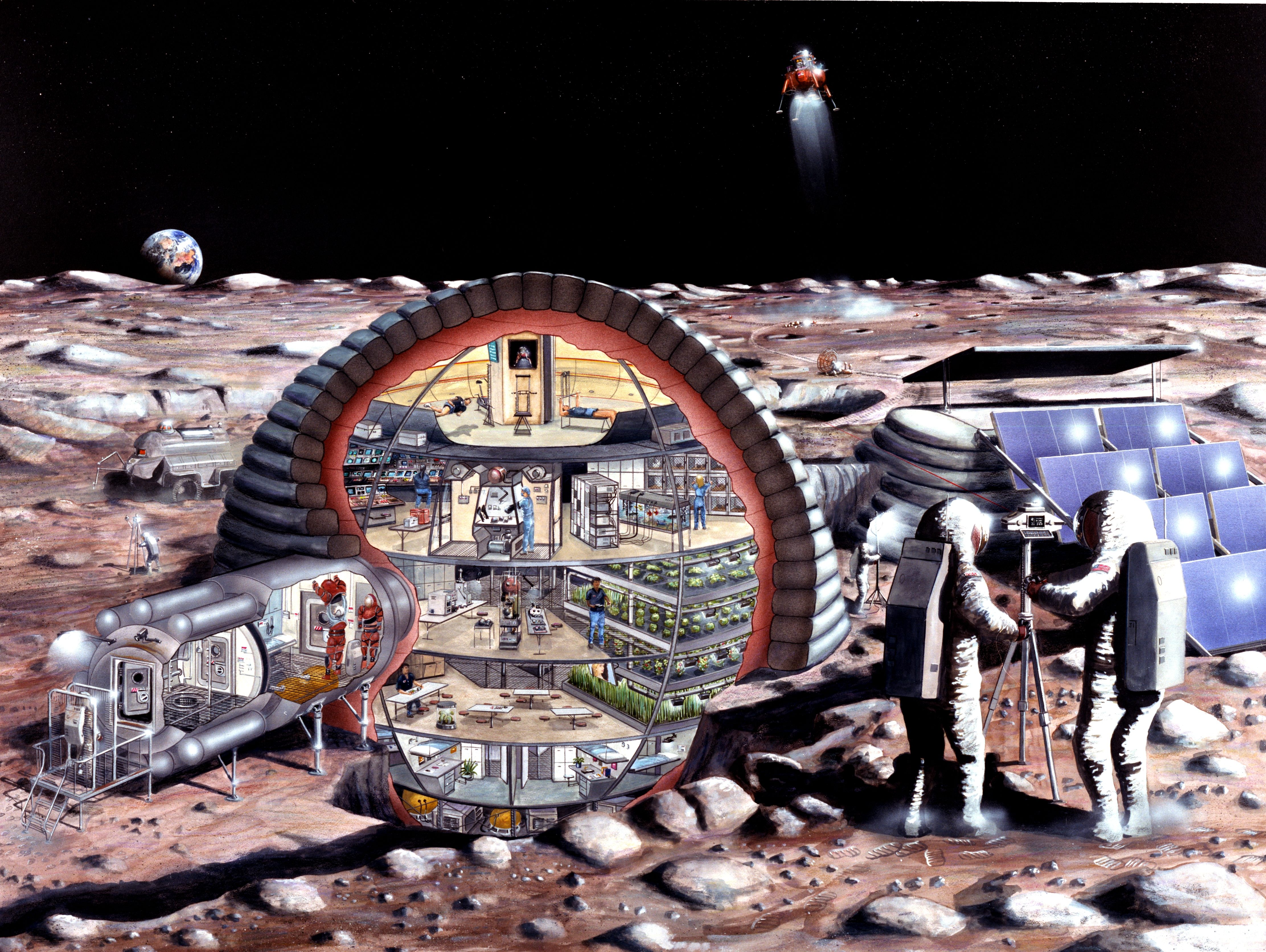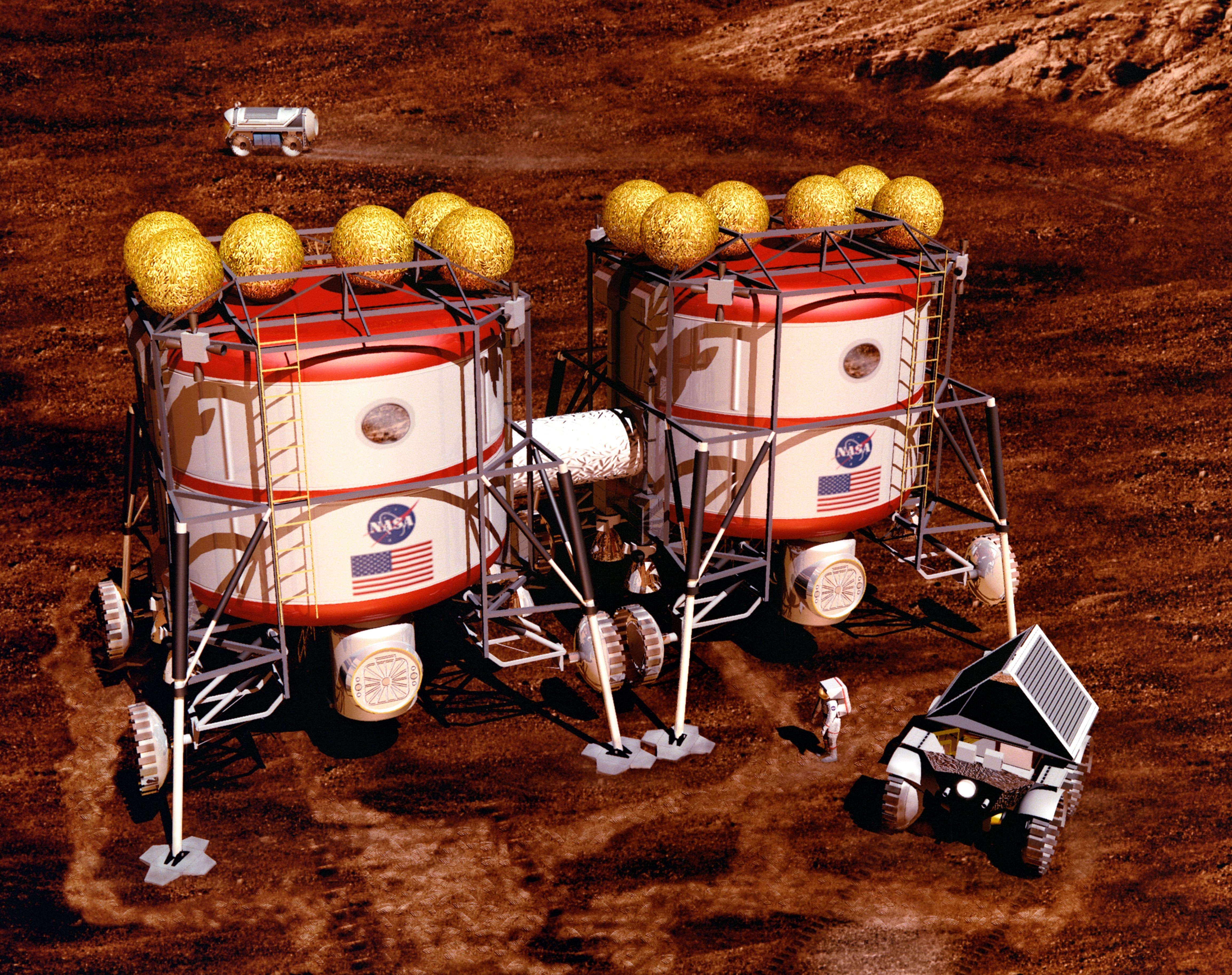The Lunar Colonies Of Our Wildest Dreams
 An illustration of the Stanford Torus, a space habitat proposed at the 1975 NASA Summer Study into designs for space colonies. The artist Don Davis’ depiction shows the ’chevron shields’ above the glass ‘skylights’. (Photo: NASA Ames Research Center)
An illustration of the Stanford Torus, a space habitat proposed at the 1975 NASA Summer Study into designs for space colonies. The artist Don Davis’ depiction shows the ’chevron shields’ above the glass ‘skylights’. (Photo: NASA Ames Research Center)
Earth has never been enough for humans. In fictional realms, there are countless depictions of people living in asteroid fields, on the moon, or in galaxies far far away. In real life, it seems every generation since the 1950s has been promised that they will be the ones to experience the first true space age—articles from the 1981 space shuttle launch, for example, predicted space colonies, Manhattan-sized interstellar power structures, and orbital jaunts as routine as airplane trips.
As funding for NASA dwindles, and governments are engrossed by problems closer to home, private companies like SpaceX and Virgin Galactic have tried to keep the dream alive. But for now, these colonies can only be imagined through artistic illustrations and computer renderings. Below, some of most beautiful images depicting how we might one day live and work in space.
 A model of the Torus colony. (Photo: NASA Ames Research Center)
A model of the Torus colony. (Photo: NASA Ames Research Center)
 Above and below: an illustration of the Bernal Sphere, as proposed by Gerald O’Neill, also at the 1975 NASA Summer Study. The Bernal Sphere could be inhabited by 20,000-30,000 people. (Photo: NASA Ames Research Center)
Above and below: an illustration of the Bernal Sphere, as proposed by Gerald O’Neill, also at the 1975 NASA Summer Study. The Bernal Sphere could be inhabited by 20,000-30,000 people. (Photo: NASA Ames Research Center)
 (Photo: NASA Ames Research Center)
(Photo: NASA Ames Research Center)
 A depiction of the O’Neill Cylinder, a space habitat proposed by Gerald K. O’Neill in his 1976 book ‘The High Frontier: Human Colonies in Space’. (Photo: NASA Ames Research Center)
A depiction of the O’Neill Cylinder, a space habitat proposed by Gerald K. O’Neill in his 1976 book ‘The High Frontier: Human Colonies in Space’. (Photo: NASA Ames Research Center)
 A 1977 concept drawing for a lunar supply base for processing moon soil. The four cylinders are the base habitat and processing facility; to the left are the solar cells. (Photo: NASA/Public Domain)
A 1977 concept drawing for a lunar supply base for processing moon soil. The four cylinders are the base habitat and processing facility; to the left are the solar cells. (Photo: NASA/Public Domain)
 An artist’s concept from 1984 showing a lunar base. (Photo: NASA/Public Domain)
An artist’s concept from 1984 showing a lunar base. (Photo: NASA/Public Domain)
 This 1989 depiction of a lunar base shows a cut-away of a 16 meter inflatable habitat, for up to 12 astronauts to live and work on the moon, (Photo: NASA/Public Domain)
This 1989 depiction of a lunar base shows a cut-away of a 16 meter inflatable habitat, for up to 12 astronauts to live and work on the moon, (Photo: NASA/Public Domain)
 An artist’s concept from 1993 showing vehicles that would permit astronauts to explore Mars in a pressurized environment. (Photo: NASA/Public Domain)
An artist’s concept from 1993 showing vehicles that would permit astronauts to explore Mars in a pressurized environment. (Photo: NASA/Public Domain)
 An lunar habitat from 2013 designed by Foster + Partners. The base is a modular system that could house four people, and which could be extended in the future. (Photo: ESA_Foster + Partners)
An lunar habitat from 2013 designed by Foster + Partners. The base is a modular system that could house four people, and which could be extended in the future. (Photo: ESA_Foster + Partners)
 A 2015 Space X poster showing Mars as a vacation destination. (Photo: Space X/flickr)
A 2015 Space X poster showing Mars as a vacation destination. (Photo: Space X/flickr)







Follow us on Twitter to get the latest on the world's hidden wonders.
Like us on Facebook to get the latest on the world's hidden wonders.
Follow us on Twitter Like us on Facebook